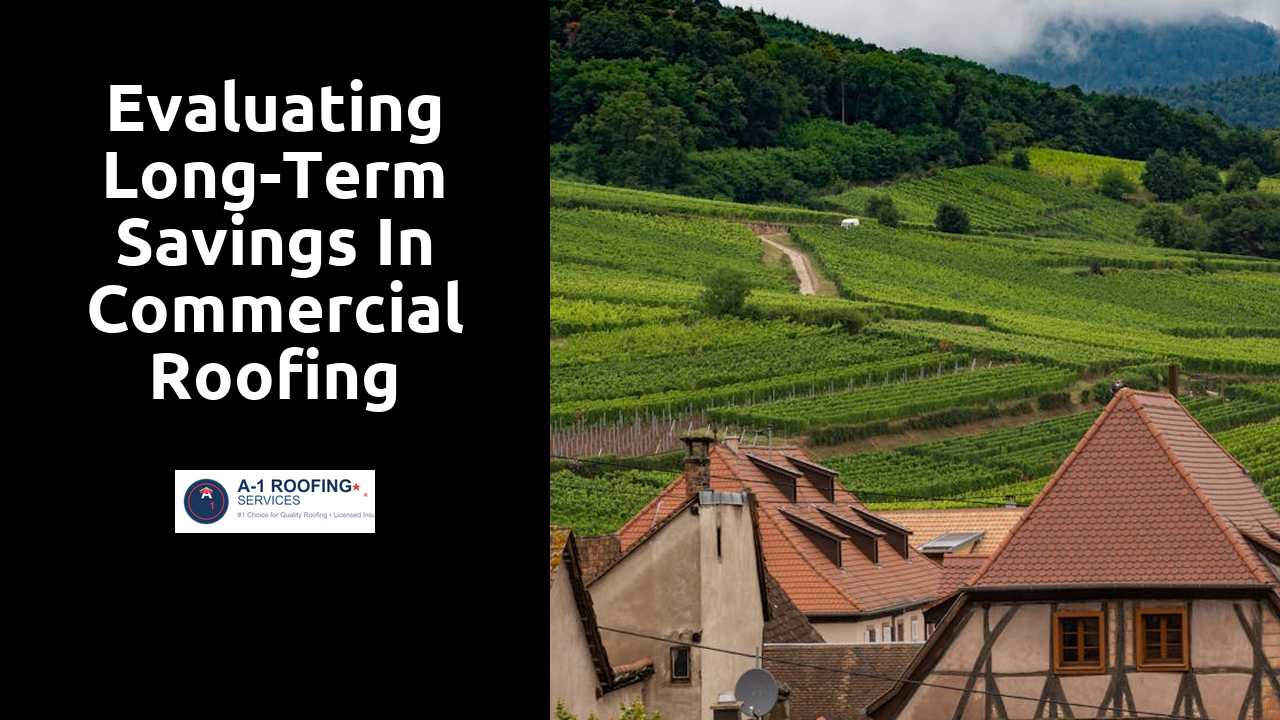
Evaluating Long-Term Savings in Commercial Roofing Investments
Table Of Contents
Assessing Warranty Options
Warranty options serve as a crucial aspect of commercial roofing investments. They not only provide assurance against defects and failures but also indicate the manufacturer's confidence in their product. A comprehensive warranty typically covers materials, labor, and specific environmental impacts. Understanding the terms and duration of these warranties can greatly influence overall long-term costs, making it essential to scrutinize each option before making a selection.
Investors should pay attention to the different types of warranties available. Some warranties are limited to certain conditions, while others offer more extensive coverage that can include routine maintenance and repair costs. It is wise to evaluate whether a manufacturer's warranty is transferable to future property owners. This feature can enhance the property's value and appeal in a competitive market, which could further justify the initial investment in quality roofing materials.
Navigate to these guys for detailed information.
Understanding Coverage to Maximize Your Investment
When investing in commercial roofing, comprehending warranty coverage becomes crucial for long-term savings. Many roofing manufacturers offer varying levels of warranty, which can significantly impact the overall financial viability of the project. A thorough examination of warranty terms is essential; this includes understanding whether coverage extends to labor, materials, and potential damages. Some warranties may also include provisions for regular inspections, ensuring that both parties are aware of maintenance obligations and repairing responsibilities.
Investors should also pay close attention to the duration and conditions that may void a warranty. For instance, a warranty might be less relevant if certain installation practices are not followed or if routine maintenance is neglected. By selecting a roofing system with a robust warranty, business owners can confidently navigate future repairs or replacements with less financial strain, thus maximizing their investment over time. Understanding these nuances helps prioritize a quality roofing system, ultimately leading to enhanced financial stability.
The Impact of Climate on Roofing Choices
Climate significantly influences the types of roofing materials suited for various commercial buildings. In regions experiencing extreme heat, options such as reflective membranes or light-colored shingles can help reduce energy costs by keeping buildings cooler. Conversely, areas prone to heavy snowfall necessitate stronger materials that can withstand weight and prevent ice dam formation. Identifying local climate patterns enables property owners to make informed decisions regarding roofing choices.
Additionally, humidity and moisture levels play a crucial role in material longevity and maintenance requirements. Environments with high humidity often benefit from roofing systems designed to resist mold and mildew, which can compromise the integrity of traditional materials. By understanding the specific environmental conditions, businesses can select roofing solutions that not only meet durability needs but also align with their long-term budget goals.
Tailoring Roofing Solutions to Environmental Conditions
Selecting the right roofing material requires a careful assessment of local climate conditions. In regions with extreme heat, reflective and energy-efficient materials can reduce cooling costs and enhance comfort. Conversely, areas prone to heavy snowfall and ice accumulation benefit from durable roofing systems that boast higher insulation values. Tailoring the roofing system to environmental demands not only prolongs its lifespan but also promotes sustainability by reducing the overall energy consumption of the building.
Proper drainage is critical in areas frequently subjected to heavy rainfall. The design should include slopes and gutters that effectively channel water away from the roofing system. Incorporating materials resistant to moisture damage and mold growth adds an extra layer of protection. Additionally, regions susceptible to strong winds may require reinforced roofing solutions that can withstand upward and lateral forces. These considerations ensure that a commercial roofing investment is resilient and effective against specific environmental challenges.
Financing Options for Commercial Roofing
When considering the financial aspects of a commercial roofing project, several options may be available. Traditional bank loans are a popular choice due to established lending structures. These loans generally come with fixed interest rates and predictable payment schedules. For businesses looking for more flexible payment options, lease financing can provide an attractive alternative. Leasing typically allows companies to spread out the cost of the roofing system over time, which can help preserve cash flow.
Additionally, some manufacturers and contractors offer financing plans directly to customers. These plans can include deferred payment options or low-interest financing, making it easier for businesses to manage cash flow while upgrading their roofing systems. Government programs may also provide incentives or grants for energy-efficient roofing solutions. By exploring these financing avenues, businesses can effectively align their roofing investments with their budgets while ensuring long-term value.
Evaluating Cost-Effective Strategies for Investment
Investing in commercial roofing can seem daunting due to the initial costs involved. However, understanding the available financing options can help alleviate some of this burden. Businesses often overlook various programs that offer tax credits, grants, or low-interest loans specific to energy-efficient roofing upgrades. By researching these possibilities, property owners not only reduce upfront expenses, they also position themselves for significant long-term savings through reduced energy consumption and maintenance costs.
In addition to exploring financial assistance, selecting materials with longer lifespans and lower life-cycle costs can lead to substantial savings. While high-quality roofing solutions may require a larger initial investment, their durability often offsets these costs over time. Regular maintenance also plays a crucial role in prolonging the lifespan of a roof. Implementing a proactive maintenance plan can prevent expensive repairs and replacements, contributing to the overall cost-effectiveness of the investment. Recognizing these strategies allows businesses to make informed decisions that align with their financial goals.
Related Links
Seasonal Factors and Their Effect on Commercial Roofing PricingUnderstanding Labor Costs in Commercial Roofing Estimates